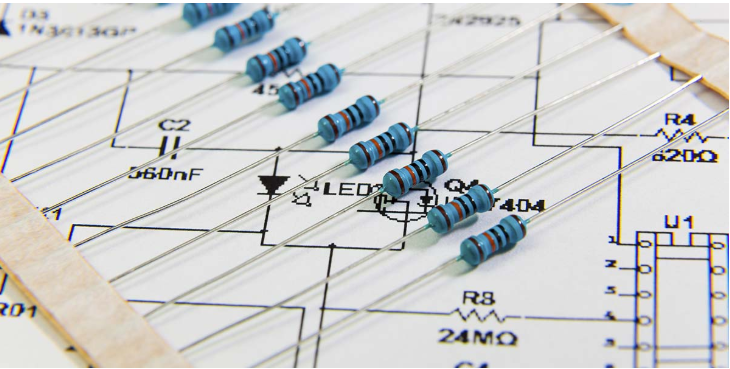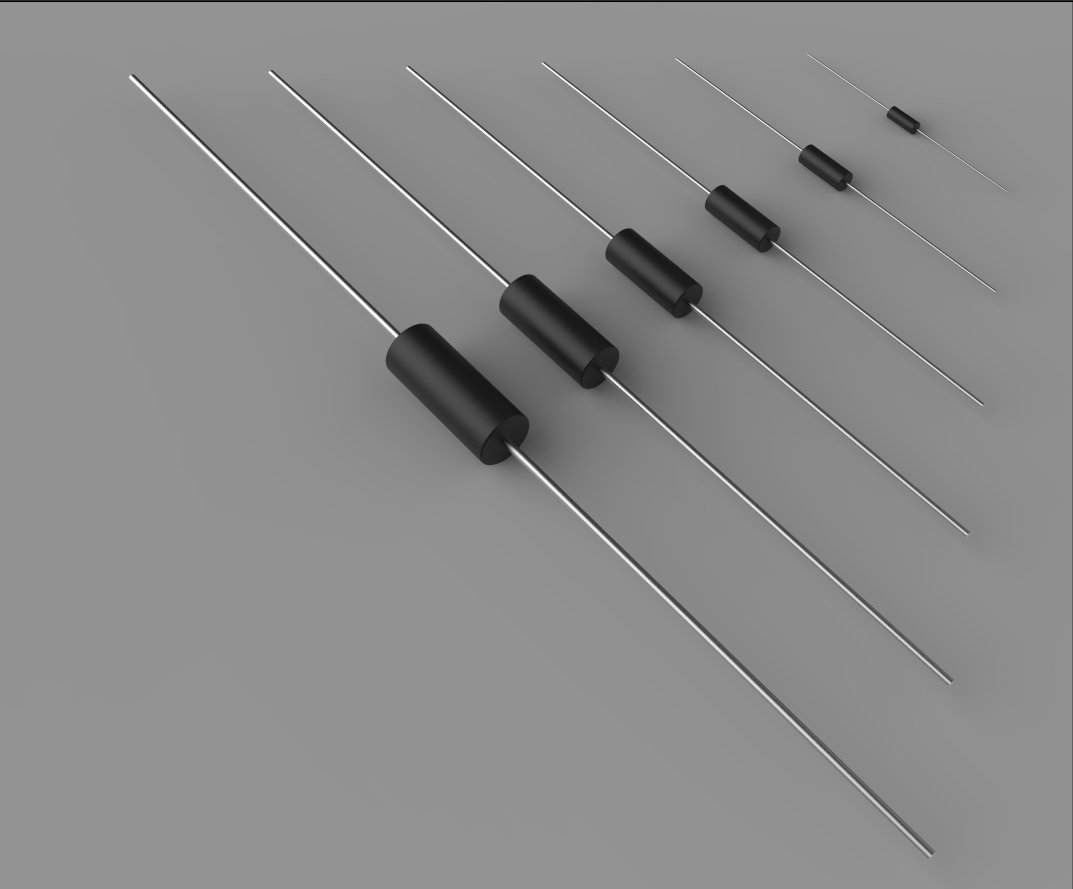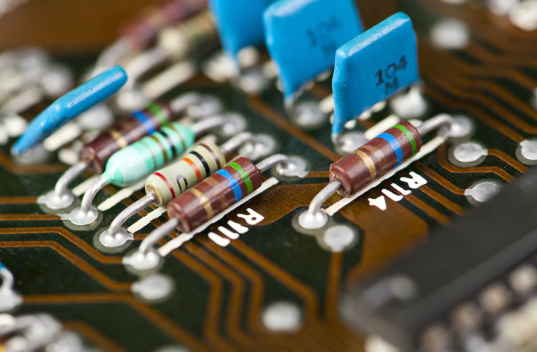Position:Home » Technical Articles
High Voltage Resistors for Power Supplies
Writer:Microhm Page View:Date:2019-09-04
There are a vast array of power supplies on the market, and the variety of resistor applications in those designs broaden the selection dramatically. Engineers from power supplier factorys often consult high voltage resistors, like HPMRY, PMRY, EE series, MPF series from Microhm Electronics. So, for the purpose of this article, power supplies will be referred to as devices that have fixed DC outputs up to several kV.
Whatever the application, power supply designers must be aware of specific regulations on safety or the environment that apply to the area, as well as the actual electrical performance. This article will look at the use of resistors in regulating the supply output and protecting the supply from faults.

The nomenclature of power supplies is often taken from whether the input is AC or DC, and what type of regulation is used to provide the correct DC output – normally switched mode or linear. Mains voltages usually power AC-DC supplies, while a DC-DC supply could be powered from a battery or any other DC power source. These DC-DC converters use switched mode technology to change the input voltage to a higher (boost) or lower (buck) output voltage.
Off-the-shelf power supplies are available for many markets and for general use, but in some cases a custom design is needed. Resistor manufacturers and suppliers such as Microhm Electronics have many years of experience in helping customers choose the correct component for every application.
For power supplies that may have supply or load changes, a series design can use a pass transistor, which will ensure a regulated load current and decrease the voltage output to the desired value. Designs such as these normally use either an IC or a low drop-out (LDO) regulator to regulate the load supply. If the circuit has a fixed output, the divider will be located internally; for other applications, either one or both resistors may be placed externally.

The resistor values are chosen to give the required ratio, so the most important consideration is accuracy. If the comparator circuit features high gain and high input impedance, the worst case value can be easily calculated using the equation above.
The regulation of the SMPS output also uses a potential divider, but this time to regulate the frequency of switching and the duty cycle. The SMPS can achieve efficiencies of up to 95% by avoiding the losses from the linear regulator’s voltage drop. The SMPS can also be more compact than a similarly rated linear AC-DC supply, as the high frequency transformer and filter/reservoir capacitors are much smaller.

The main drawback for the SMPS is that it must have a minimum load. No-load conditions can damage the supply. To avoid this condition, designers often use a power resistor as a dummy load. This resistor is intended to draw the minimum specified load if the main load is detached. Naturally, the dummy resistor will dissipate power, which will have an effect on the overall supply efficiency and will need to be considered when specifying the resistor. Another way to circumvent this problem is to use a shunt resistor across the output if the load goes open circuit. Other resistors are also used in SMPS designs for safety purposes. Low-ohm, high-power resistors often protect against over-voltage conditions. Current limiting designs protect against short-circuits.
Almost every application for resistors in power supply design has different specification priorities and performance requirements. These include resistors that need to be able to handle high voltage, current and power, as well as ones that require low tolerances. Often specialized attributes are needed, like surge capability or negative TCR. Microhm Electronics provides various resistors for options.
Whatever the application, power supply designers must be aware of specific regulations on safety or the environment that apply to the area, as well as the actual electrical performance. This article will look at the use of resistors in regulating the supply output and protecting the supply from faults.

The nomenclature of power supplies is often taken from whether the input is AC or DC, and what type of regulation is used to provide the correct DC output – normally switched mode or linear. Mains voltages usually power AC-DC supplies, while a DC-DC supply could be powered from a battery or any other DC power source. These DC-DC converters use switched mode technology to change the input voltage to a higher (boost) or lower (buck) output voltage.
Off-the-shelf power supplies are available for many markets and for general use, but in some cases a custom design is needed. Resistor manufacturers and suppliers such as Microhm Electronics have many years of experience in helping customers choose the correct component for every application.
For power supplies that may have supply or load changes, a series design can use a pass transistor, which will ensure a regulated load current and decrease the voltage output to the desired value. Designs such as these normally use either an IC or a low drop-out (LDO) regulator to regulate the load supply. If the circuit has a fixed output, the divider will be located internally; for other applications, either one or both resistors may be placed externally.

The resistor values are chosen to give the required ratio, so the most important consideration is accuracy. If the comparator circuit features high gain and high input impedance, the worst case value can be easily calculated using the equation above.
The regulation of the SMPS output also uses a potential divider, but this time to regulate the frequency of switching and the duty cycle. The SMPS can achieve efficiencies of up to 95% by avoiding the losses from the linear regulator’s voltage drop. The SMPS can also be more compact than a similarly rated linear AC-DC supply, as the high frequency transformer and filter/reservoir capacitors are much smaller.

The main drawback for the SMPS is that it must have a minimum load. No-load conditions can damage the supply. To avoid this condition, designers often use a power resistor as a dummy load. This resistor is intended to draw the minimum specified load if the main load is detached. Naturally, the dummy resistor will dissipate power, which will have an effect on the overall supply efficiency and will need to be considered when specifying the resistor. Another way to circumvent this problem is to use a shunt resistor across the output if the load goes open circuit. Other resistors are also used in SMPS designs for safety purposes. Low-ohm, high-power resistors often protect against over-voltage conditions. Current limiting designs protect against short-circuits.
Almost every application for resistors in power supply design has different specification priorities and performance requirements. These include resistors that need to be able to handle high voltage, current and power, as well as ones that require low tolerances. Often specialized attributes are needed, like surge capability or negative TCR. Microhm Electronics provides various resistors for options.
Keywords:
Latest News
- Resistor's role in measuring and correcting LED,,,
- Single through-hole resistors' characteristics ,,,
- Why shunt resistors for current sense applicati,,,
- Metal-film resistors with small size, high resi,,,
- 36W High-Current Shunt Resistors MMS8420,,,
- 1W Surface Mount Resistor MPR1206,,,
- An Overview of Microhm Electronics' Resistor Pr,,,
- More anti-sulfur resistors used in harsh envir,,,
- Resistance changes with temperature,,,
- 140W TO247 High Power Heatsinkable Resistor,,,
- MMS5930 is ideal for current sensing in industr,,,
- Shunt resistors selection for engineers' design,,,
- Considerations for choosing precision resistors,,,
- Ceramic Encased Cement Resistors NWH Series for,,,
- Resistors for Passive Balancing in Battery-Pow,,,
Hot Articles
- Microhm will take part in 10th Automotive World,,,
- Thanks for Visiting Microhm's Booth E5-5706 in ,,,
- Resistors in Short Supply: Blame Cars,,,
- New lunch: High Power Precision Shunt Resistor,,,,
- How to Test a Resistor,,,
- Innovative Technology, Future Electric: Electri,,,
- What is Precision Resistors?,,,
- SMD Resistors Sizes and Packages,,,
- The Construction and Features of Metal Film Res,,,
- What is a TO-220 Resisor?,,,
- Hot Selling Products: Precision Shunt Resistors,,,
- How to Calculate the Equivalent Resistance Valu,,,
- What is a Fixed Resistor?,,,
- Resistors in LED Circuits,,,
- Resistors Types and Materials Overview,,,
Resistance applications
- The Main Application for High Precision and Low,,,
- The Four Important Functions of Alloy Resistors,,,
- Precision Resistors' Construction and TCR,,,
- Industrial Roberts Applied to Solar Photovoltai,,,
- Miniature future for passive electronic compone,,,
- Why Zero-Ohm Resistors?,,,
- Carbon Film Resistors' Features and Application,,,
- Heater Blower Motor Resistor in Air Conditioner,,,
- The Measurement Accuracy of Automotive Shunt is,,,
- Urbanization Development Bringing the Transform,,,
- Difference Between High Precision Resistors and,,,
- Shunt Resistor MMS8420 for High Current Stable ,,,
- Surface Mount Resistor's Size and Package ,,,
- Select the Right Resistor for Harmonic Filterin,,,
- BMS for New Energy Vehicle,,,
